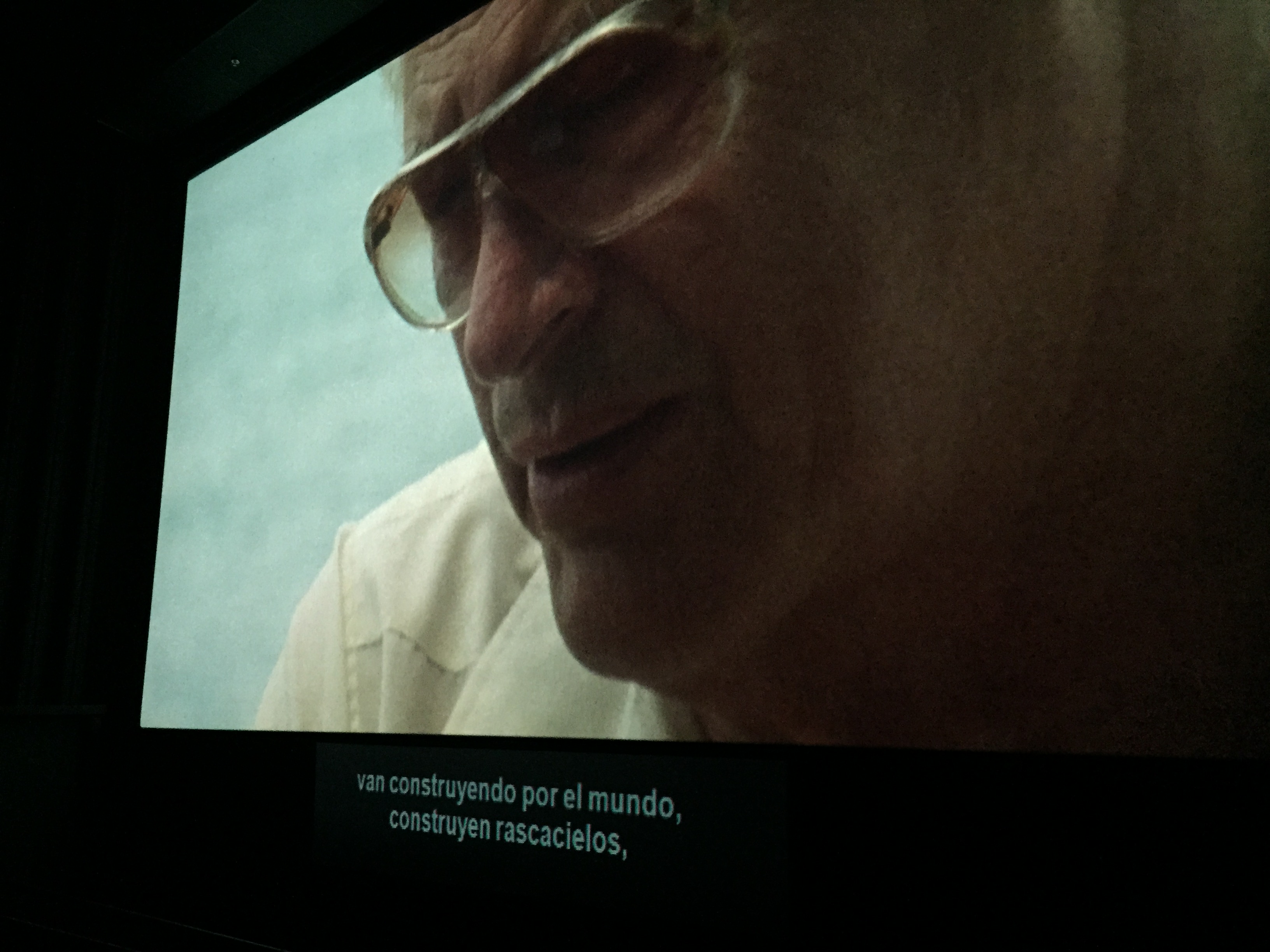Reviews include Irena’s Vow, The Beast, and Before I Change My Mind.
A Man, A Film, A Canal: Panama’s 5th International Festival
May 9, 2016
by Brian D. Johnson
Film festivals offer a uniquely privileged form of tourism. As a critic I’ve had the pleasure of making annual trips to Cannes for 20 years, and one-time-only visits to festivals in Berlin, London, Havana and Panama—plus stints at various festivals across Canada. But last month, when I showed my documentary feature Al Purdy Was Here at the Panama International Festival, it was my first time at a foreign festival as a filmmaker. I’d been there a couple of years earlier as a journalist, but this was a very different experience. I spent four days in the capital attending the festival, then tacked on another four days on a car-free, and carefree, Caribbean island called Isla Bastimentos.

Separated by a 45-minute plane ride, they were very different worlds. The capital is a Spanish-speaking metropolis with a urban spectrum that ranges from slums to shimmering high rises; the island is a sleepy slice of paradise with a shantytown inhabited by descendants of Jamaican migrant workers who speak English Creole with Hispanic inflections. In both places it was steaming hot, but in the city the only breeze came from the air-conditioning. Panama is so absolutely equatorial that people say there are no seasons. But there’s actually two: indoors and outdoors. Indoors it’s refrigerated to sweater weather. Outdoors the air is like hot fudge; without thinking, you seek out the shady side of the street.
Panama is now a loaded word. You can’t fly there these days without hearing offshore jokes about laundering something other than your linen shirt. And Panamanians are not amused. “We’re always being blamed, or credited, with things other people do,” one of them told me, citing the Panama hat‚ which originated in Colombia. “The Panama Papers,” with its Le Carré ring of banana-republic intrigue, is just the latest insult—a catchy meme that stigmatizes just one cove in an intercontinental reef of tax-shelter subterfuge. Sure, Panama City’s skyscrapers (which include a Trump tower shaped like a schooner’s sail) may be built on rivers of questionable cash. But there’s nothing original in this. Visions of evil masterminds stashing their fortunes in Swiss banks never hurt Switzerland’s pristine rep for precision watches, perforated cheese, and triangular chocolate bars. But Panama is a young country trying to stake out its identity, and shake off a colonial past just 26 years after a grotesque U.S. military invasion. It has good reason to feel sensitive, and misunderstood.

But what do I know? These are casual impressions from a tourist staying in a luxury hotel in the gentrified enclave of the old city, enjoying the exuberant hospitality of a film festival celebrating its 5th anniversary. That’s a good age for a festival. Panama’s one-week event is now big enough to attract a quorum of interesting filmmakers from far-flung places, but small enough that you can find everyone at the same party by the end of the night. The festival was created by TIFF co-founder Henk Van der Kolk, who has since returned to Toronto, cutting short his ex-pat adventure after a messy falling out with his Panamanian colleagues. Now the festival is run almost exclusively by a firecracker team of women, headed by Executive Director Pituka Ortega-Heilbron, an accomplished documentary maker, and Artistic Director Diana Sánchez, who programs TIFF’s Latin American and Iberian fare. (Wherever you look on the festival circuit, the TIFF diaspora is not far away—Torontonians also run major film festivals in San Francisco and Palm Springs.)
A film festival is by nature a nexus, and Panama is a hemispheric nexus on every level: geographic, economic, cultural . . . physical. It’s the rattle on the snaky tail of Central America, bisected by the mainline vein of the canal. To paraphrase Freud, sometimes a canal is just a canal, but the Panama Canal throws up a jungle of a metaphor. It was, after all, the birth canal that begat a country, an apartheid gash carved out of red clay soil, bordered by a gated compound called the American Zone, which had a caste system as well-levered as the locks that raised and lowered the ships. Panama now owns the canal, which has undergone a recent expansion, the ultimate toll road for this country-as-conduit, a pan-American plaza of commerce and culture.

It’s prime real estate for an international film festival. One day the festival invited me to join a field trip of filmmakers, which involved a train excursion along the canal and a marathon bus ride around the Caribbean coast. My 10 travelling companions turned out to be a global mix right out of central casting. They ranged from Grímur Hákonarson, the Icelandic director of the droll and devastating Rams (one of my top 10 films of 2015), to Nuria Frigola Torrent, the Spanish-born Peruvian producer of Daughter of the Lake, a documentary about a poor farm woman fighting to stop her mountain lake from being excavated for a gold mine.
Filmmaking is a kind of migrant activity, where almost everyone you meet seems to be a fish out of water. Also on the bus were Spanish director Miquel Galofré and American producer K. Tyler Johnston, who both found themselves in in Trinidad and Tobago, and made a film about a Haitian immigrant in a Bahamian shantytown who goes home looking for his 103-year-old father. Tyler called it a “backpack movie”—they shot it themselves on shoestring, with cameras innocuous enough to sling over their shoulders. Sitting next to them on the bus, dazed with jet lag, were India’s Kabir Khan and Amar Butala, both in Panama to promote their three-and-a-half hour blockbuster, Bajrangi Bhaijaan, which has become the second highest-grossing Bollywood picture ever made.

I saw a number of films I liked in Panama, but feel strangely unmotivated and unobliged to write about them. When you’re at a festival as a filmmaker it’s nice to be relieved of the obligation to report and evaluate. I’ll be doing plenty of that next week when I step back into the saddle to cover Cannes for Maclean’s—my first bout of journalism since since covering Cannes two years ago.
So how did Al Purdy fare in Panama? Well, the first screening, in a downtown multiplex, had a tiny but appreciative audience. A documentary about a dead Canadian poet is not exactly a hot ticket. And I was dismayed when the Spanish subtitles didn’t work for the first 20 minutes, but the audience was sufficiently bilingual that no one left, everyone stayed for the Q & A, and the response was as warm as you could wish. The second screening had a more robust crowd, which included Karine Asselin, Canada’s ambassador to Panama, along with three other diplomats she’d invited—ambassadors from Mexico, Portugal and Honduras—all seated a row with big bags of popcorn. Purdy would have found that a bit rich, considering he was one of the least diplomatic characters you’d ever want to meet.

For the first time in ages I sat through an entire screening. I usually check the first few scenes to make sure the framing and sound are ok, and the last few to try to slip into the head-space of the audience before the Q & A. But I’ve seen my film far too many times for it to be a pleasure. This, however, was my first opportunity to present Purdy outside Canada (it played at the Havana Film Festival without me), so I was curious to know how it would play to a foreign audience. To my relief, as Al’s words rumbled by with Spanish subtitles, the audience seemed neither bewildered nor bored, and the hearty applause seemed genuine, as did the impassioned comments during the Q & A. But then notion of a provocative poet who behaved like a rock star while embedding his voice in a national culture is not exactly foreign to Latin America. Al Purdy, who spent a lot of time in Mexico, seemed right at home in Panama.



